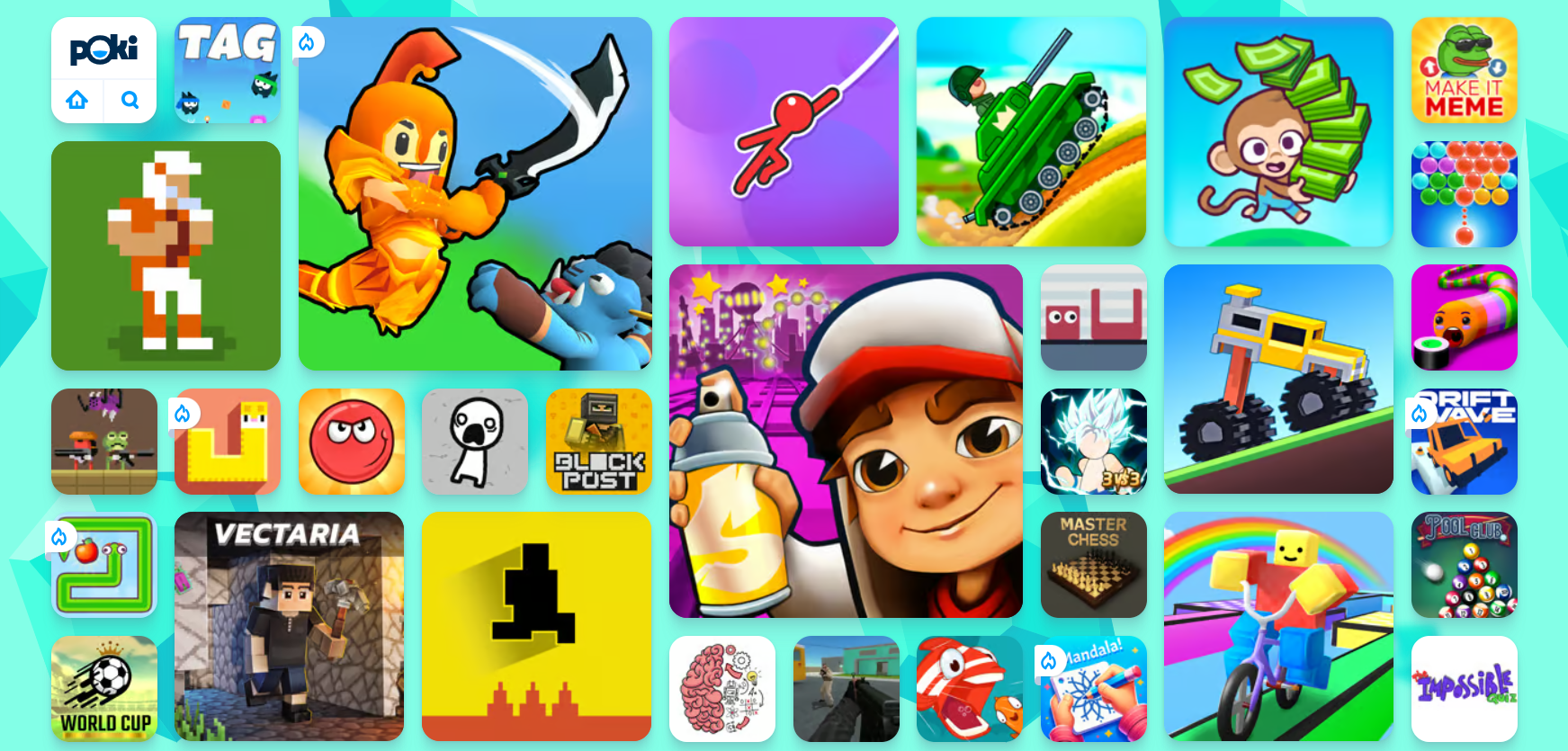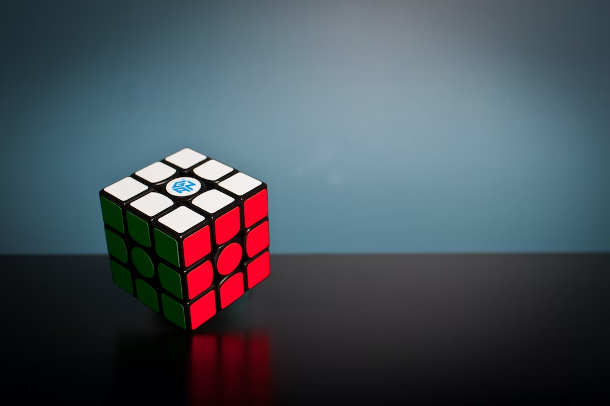Casual
Exploring the Characteristics of CS:GO Trade Skins

Many players find pleasure not only in playing CS:GO, but also in the process of trading skins. Market analysis, search for profitable offers, communication with other traders – all this can be not only exciting but also profitable. If you’re itching to try skin trading, this article will help you understand the key features of this activity.
What is Skin Trading in CS:GO?
CS:GO skin trading involves the process of buying, selling, or exchanging virtual items. Players can trade skins among themselves using various platforms and markets, including Steam. One player may offer his skin to another player in exchange for another skin or in-game items that he considers to be of equal or greater value. This allows players to build their collection of skins, trade them with friends, or sell them to earn in-game currency or real money. Skin trading has become popular in CS:GO as many skins come in different rarities and prices. Moreover, collecting or trading rare skins can become a hobby or a way of earning money for some players.
How to Trade Skins in CS:GO?
If you are planning to start trading items, you should have an active account on the Steam CS:GO skin trading platform, as the game of CS:GO and all skin trading takes place through Steam.
To start trading skins, you must have the actual skins in your CS:GO inventory. You can get them by playing the game, opening cases, buying from the marketplace, or trading with other players.
To activate the trading feature on your Steam account, you will need to activate two-factor authentication (2FA) through the Steam Guard feature or via email. This is necessary to keep your account secure and prevent fraud.
Be prepared for certain restrictions if you’re using a new Steam account. They exist to prevent fraud. Usually, full trading requires your Steam account to be active for at least 30 days, and you must make at least one purchase on the Steam marketplace.
Main Features of CS:GO Trade Skins
Like financial trading, skin trading involves buying and selling assets for profit. Players analyze the market, look for opportunities for profitable trades and make decisions based on market dynamics. Let’s take a look at the unique features of skin trading.
Rarity and Quality of Skins
Skins of lower rarity or higher quality are generally considered more attractive to players. This is due to the desire of players to stand out from the crowd, in particular through the appearance of a weapon or character. This can increase the demand for such skins and therefore the sale of such in-game items can be extremely profitable. Items from the Covert and Classified categories in Factory New or Minimal Wear exteriors are more in demand among CS:GO players.
Visual Design and Patterns
Skins with rare or unique designs and patterns are usually more valuable and sought after by players. For example, skins with rare patterns such as “Case Hardened” or “Doppler” for some knives can command a high price due to their limited supply on the market.
In addition, skins with beautiful designs and patterns can attract more attention and be more in demand. Players often strive for skins that look aesthetically pleasing and have unique details or color combinations.
Wear and Float Values
CS:GO skins with a low float value (closer to 0) usually have a brighter and crisper design, while skins with a high float value (closer to 1) may look faded, scratched, or damaged. A lower float value is generally considered more attractive, and such skins may have a higher price tag.
Float value can affect the rarity of the skin. Some items have a limited number of wear options, and these may include particularly rare float value combinations. If a certain float value is rare for a particular skin, this may increase its price.
Among the skins with the rarest float value:
AWP | Dragon Lore
AK-47 | Case Hardened
Gut Knife | Doppler
Trading and Market Value
Market value allows traders to estimate the value of skins in exchange transactions. If the skin has a higher market value than the offered skin in the exchange, then it can be a good deal for the trader.
The high market value of CS:GO skins can serve as an indicator of their rarity and desirability among players. Some traders seek to purchase expensive and rare skins to establish their status and prestige in the gaming community.
To Wrap Up!
Trading CS:GO skins allow players to expand their collection of skins. Players can trade skins with other players to get new, rare, or desirable items for their collection. This can be especially attractive for players who are interested in collecting and want to have varied and valuable skins. However, trading CS:GO skins can be associated with risks, including loss of funds or lack of expected results. To get the most out of trading skins, players need to study the market, be informed about current trends, and make informed decisions when making trades.
Casual
Encouraging Growth and Motivation: Resources for Child Development

Child development is a complex journey marked by critical milestones where each stride forward builds upon the foundation of the previous one. Acknowledging children’s individual needs, pediatric therapy services tailor strategies to foster physical, emotional, and cognitive growth. To support this transformative process, environments that prompt curiosity and engagement, coupled with advanced educational tools, play an instrumental role in shaping young minds. These resources, carefully selected and applied, can significantly amplify a child’s developmental trajectory. Keep reading to learn about the effective ways these tools and techniques can aid in advancing childhood milestones.
Pediatric Therapy Services: Enhancing Developmental Milestones
Pediatric therapy services support children as they reach and surpass developmental milestones. These services, often provided by skilled therapists, address various growth challenges, ensuring each child has the best possible start in life. From speech and occupational therapy to physical and behavioral interventions, these professionals tailor their approach to meet the unique needs of every young patient.
Therapists work relentlessly to motivate children, fostering an environment where milestones are not merely achieved but celebrated. Through personalized, one-on-one sessions, children gain the confidence and skills necessary to navigate their developmental journeys more easily. The trust between therapist and child is a solid foundation for consistent progress and paves the path for lifelong learning and adaptation.
Resource provision is a key component of pediatric therapy, equipping parents with the tools to continue therapy practices at home. Effective communication between therapists and families ensures a cohesive strategy that envelops the child’s daily routine, enhancing the therapy’s impact. It also allows parents to identify subtle progress, reinforcing their pivotal role in the child’s developmental success.
If you’re looking for pediatric therapy in your area, a simple Google search like “pediatric therapy Arizona” will help you find local providers and services tailored to your child’s needs, ensuring they receive the specialized care necessary for their development.
Optimizing Play Spaces: Creating Environments for Learning and Exploration
Optimized play spaces are vital platforms where children engage with their world, build skills, and unleash their creativity. Designers of such areas pay astute attention to elements that promote safe exploration and intellectual stimulation. A thoughtfully arranged play environment serves as a place of entertainment and a crucible for burgeoning development.
Professionals incorporate a variety of tactile and visual stimuli within play areas to cater to diverse developmental needs and interests. Stimulating sensory experiences is central to cognitive and motor skill refinement among younger populations. The intentional selection of colors, textures, and interactive features sparks curiosity and encourages physical activity, which is fundamental to healthy growth.
Accessibility remains paramount in creating play spaces, ensuring they cater to children across all abilities. Including adaptive resources within these environments demonstrates a commitment to inclusive development, allowing every child to participate and benefit from the joy and learning play offers. Such inclusiveness fosters a sense of community and belonging, which is essential for emotional and social development.
Affording children autonomy in their play advances self-directed learning and problem-solving capabilities. When children feel empowered to make choices within their play, they better understand their preferences and abilities, setting the stage for confidence and self-awareness — qualities that are instrumental as children grow and transition through life’s stages.
Additionally, incorporating elements like fake plants or outdoor plants from retailers like Nearly Natural outdoor plants into play spaces can enhance children’s sensory and aesthetic experience.
Interactive Learning Tools: Technology and Resources for Cognitive Development
Interactive learning tools harness technology’s power to solidify children’s cognitive development. These digital resources provide an array of engaging, educational content that aligns with critical thinking and problem-solving skills.
Software and applications designed for children’s learning capitalize on the allure of multimedia to capture young minds. Effective education solutions provide children with stimulating challenges that are age-appropriate and aligned with developmental targets.
The discerning use of educational technology in classrooms and homes can reinforce concepts and skills taught through traditional methods. It creates a harmonious blend of instruction and interactive play, thereby cementing a child’s understanding and retention of information.
Providers of such educational platforms are ever vigilant, updating content to reflect new educational strategies and the latest academic research. Thus, children equipped with these technological tools remain at the vanguard of current learning methodologies, all while engrossed in fun and dynamic ways.
Overall, caregivers and educators can provide comprehensive support for children’s developmental journeys by integrating pediatric therapy services, optimized play spaces, and interactive learning tools. These resources nurture their physical, emotional, and cognitive growth and cultivate a lifelong love for learning and exploration.
Casual
Advancing Battery Drain Analysis for Better Gadget Performance

As our reliance on electronic gadgets grows, the quest for improved battery performance becomes increasingly crucial. This journey is not just about prolonging battery life but also understanding and enhancing how our devices consume power. Advancing battery drain analysis stands at the heart of this quest, offering insights that could revolutionize gadget performance. Join us as we delve into the intricacies of battery usage, exploring innovative approaches and technologies that aim to keep our devices running longer and more efficiently.
The Importance of Understanding Battery Drain
Before we dive into the technicalities, let’s establish why battery drain analysis is so vital. Our devices are more than tools; they are extensions of our personal and professional lives. Yet, the frustration of a dying battery can disrupt our day, underscoring the need for more resilient and smarter battery technologies. Analyzing battery drain does not only aim to extend device uptime but also to optimize how energy is used, ensuring your gadget maintains peak performance when you need it most.
The Role of Software in Power Management
Software plays a pivotal role in managing how a gadget consumes battery power. Modern operating systems come equipped with advanced power management features, such as adaptive brightness and energy-saving modes, which significantly impact battery longevity. Moreover, smart algorithms can predict user behavior to optimize energy consumption further, ensuring that devices expend power judiciously.
Breaking Down Battery Usage
Every app and background process on your gadget contributes to battery drain, but not equally. Understanding these consumption patterns is key to optimizing device performance. For instance, some applications are power-hungry due to intensive graphic requirements or constant data synchronization. By identifying these patterns, developers can tailor their apps to be more energy-efficient, thereby enhancing the overall battery life of the device.
Innovations in Battery Technology
While software advancements are crucial, the development of new battery technologies is equally significant. Researchers are continuously exploring novel materials and chemistry to enhance battery capacity and reduce charging times. Innovations such as solid-state batteries promise to deliver better performance and safety, illustrating how technological advancements are paving the way for the next generation of energy storage solutions.
Diagnostic Tools and Techniques
To effectively analyze and mitigate battery drain, various diagnostic tools and techniques are employed by both developers and users. These tools provide detailed insights into which processes consume the most power, enabling targeted optimizations. From simple battery monitoring apps to comprehensive device diagnostics, the arsenal available to fight power inefficiency is more robust than ever.
The Future of Battery Drain Analysis
Looking ahead, the future of battery drain analysis is bright, with artificial intelligence and machine learning poised to play a significant role. These technologies offer the potential to not only diagnose battery drain more accurately but also predict and automatically adjust settings to optimize battery life. As we inch closer to more sustainable and user-friendly devices, the importance of advancing battery drain analysis cannot be overstated.
Integrating Renewable Energy Sources
One promising area of research is the integration of renewable energy sources with battery technology. Solar cells, for instance, can provide continuous charging during daylight, reducing dependency on traditional charging methods and extending battery life. This integration can lead to gadgets that are not only more energy-efficient but also more environmentally friendly.
Collaborative Efforts for a Sustainable Future
The battle against battery drain is a joint effort that requires collaboration across industries and disciplines. From semiconductor manufacturers to app developers, and from researchers to end-users, everyone has a role to play. By pooling resources and expertise, we can develop solutions that not only improve battery life but also contribute to a more sustainable and efficient use of technology.
Enhancing User Education and Awareness
Improving battery life is not solely the responsibility of developers and researchers. Educating users on best practices for battery management can significantly contribute to optimizing device performance. Simple habits like adjusting screen brightness, closing unused apps, and understanding battery settings can make a substantial difference. Increasing user awareness and promoting energy-saving habits will complement technological advancements in combating battery drain.
Conclusion
In conclusion, battery drain analysis is a crucial aspect of improving gadget performance, requiring a blend of innovative software solutions and advancements in battery technology. By understanding and optimizing how our devices use power, we can significantly enhance their reliability and efficiency. As technology continues to evolve, so too will our methods for ensuring our gadgets are as enduring and efficient as possible, making every charge last longer and every moment spent on our devices more rewarding.
Browser Games
Comprehensive Guide to Mastering WoW Boost Gold

World of Warcraft (WoW) continues to be a cornerstone of the MMORPG industry, attracting millions of players worldwide. One of the game’s most valuable commodities is gold, which can be amplified through boosting services. This guide will explore strategies to master WoW boost gold, ensuring both efficiency and profitability.
Understanding WoW Boosting
What is WoW Boosting?
WoW boosting involves experienced players helping others to achieve specific in-game goals in exchange for gold or https://epiccarry.com/wow/boost/gold/. This can include dungeon runs, leveling up characters, or completing challenging quests.
The Benefits of Boosting
Boosting not only helps less experienced players advance through the game but also allows boosters to accumulate substantial amounts of gold quickly. This gold can be used for various in-game expenses or traded on third-party platforms.
Getting Started with Boosting
Choosing Your Niche
Successful boosters often specialize in particular areas such as raiding, dungeons, or PvP battles. Picking a niche depends on your expertise and the current demand in the WoW community.
Setting Up Your Services
Once you’ve selected your niche, set up your boosting services by advertising in-game, on community forums, and on social media platforms. Be clear about what your service includes, the cost, and the expected time frame.
Efficient Time Management
Time is a critical factor in boosting. Developing strategies to complete boosts quickly can lead to higher earnings as you can serve more clients.
Pricing Strategies
Understanding the market is crucial. Set competitive prices based on the current demand and supply of the boosting services you offer.
Customer Satisfaction
Ensure your clients are satisfied by providing a reliable and transparent service. Happy clients are more likely to return or recommend your services to others.
Handling Disputes
Always handle disputes professionally. If a client is unhappy with a service, offer solutions like partial refunds or an additional boost. This helps maintain your reputation and could convert a dissatisfied customer into a loyal one.
Mastering WoW boost gold requires dedication, strategic planning, and excellent customer service. By specializing in a niche, efficiently managing your time, and maintaining a strong reputation, you can maximize your profits while enhancing the gaming experience for others.
-

 Guides4 years ago
Guides4 years ago6 Proven Ways to Get more Instagram Likes on your Business Account
-

 Mainstream9 years ago
Mainstream9 years agoBioWare: Mass Effect 4 to Benefit From Dropping Last-Gen, Will Not Share Template With Dragon Age: Inquisition
-

 Casual8 months ago
Casual8 months ago8 Ways to Fix Over-Extrusion and Under-Extrusion in 3D Printing
-

 Guides5 months ago
Guides5 months agoExplore 15 Most Popular Poki Games
-

 Guides1 year ago
Guides1 year agoGan Rubik’s Cube vs. Traditional Rubik’s Cube: Key Differences and Advantages
-

 Uncategorized3 years ago
Uncategorized3 years agoTips To Compose a Technical Essay
-

 iOS Games1 year ago
iOS Games1 year agoThe Benefits of Mobile Apps for Gaming: How They Enhance the Gaming Experience
-

 Mainstream11 years ago
Mainstream11 years agoGuild Wars 2: The eSports Dream and the sPvP Tragedy
